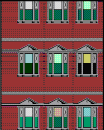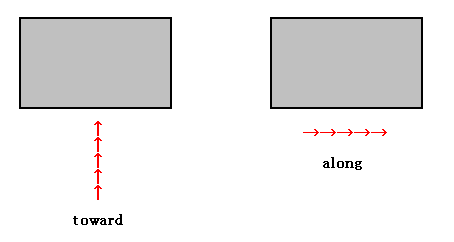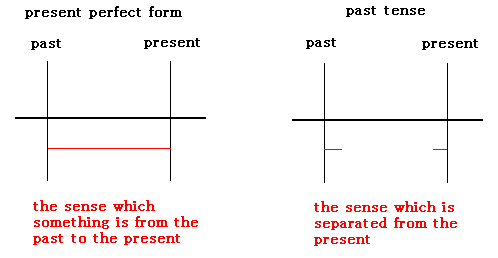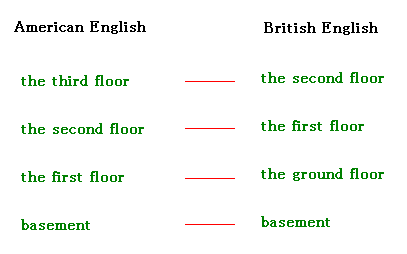EnglishCafe
 |
| Page 5 -There are ten faculties in the university. The College of International Relations is three stories high and on a large site. A cat walked toward the wide entrance. The cat went up to the top floor and walked straight to a room at the end. This door has a small entrance. It opens and shuts automatically.- Going into it, I saw a man standing. "Hi, Sherry. Where have you been?" "Miaow." Just walking around here.  Today's points  -The point 1- A cat walked toward the wide entrance. "Toward the wide entrance" means like "to the wide entrance." "Toward" has the direction like "to." The noun is put on after it. (1) I walked toward the window and I watched the outside from the window. There were two students on a bench. They talked. And then they walked toward the fountain. Moreover "along" also has the direction. But it means like we walk as looking something.  Pina and her keeper walked along the beach. Sherry was running along the street in the campus. See the figure 5-1. Figure 5-1.  -The point 2- Where have you been? The above is the interrogative sentence of the present perfect form. This is "have + the past participle." The above means where you were until now. The present perfect form has the sense from the past to the present like the time line. Thus, we can use it when someone came back from the outside or the traveling, if you include "until now." The past tense "Where did you go?" does not include "until now." This is separated from the present. And we have it as the sense. (2) Where have you been? I have been to Europe. I haven't seen much of you recently. Where have you been? I have been abroad to study.
See the figure 5-2. These are the time sense of the present perfect form and the past tense. Figure 5-2. 
Moreover, because it has the meaning "until now", we can ask someone a experience. (3) Have you ever been abroad? No, I haven't. Have you ever been fishing? Yes, I have. Really? Let's go fishing next Sunday.  Have you ever dated Pina, Libre? No, I haven't. She is a friend of mine.
What is more, "Have I seen you before?" is used. This means Do you know when I met you?  Oh, are you Sherry? Have I met you before? Ah, I met you a long time ago.  Is he your keeper, Sherry? He is my friend. I haven't seen him before. He looks like a good-natured man. It's his only merit. Next, the following example asks if someone saw or not, when the speaker is looking for. (4) Have you seen Shirley? Yeah, I saw her at the restaurant.
The present perfect form has the one line from the past to the present as the sense. If we remain the line sense, use the present perfect form. For example, "Have you seen Shirley?" in the above has the time from the past to the present when the speaker utters. And the answer is the past tense "I saw her at the restaurant.", because the hearer put he focus on the past when s/he saw her. That is to say, the hearer has the only past as the sense. "Yesterday" or "ago" can not be used with the present perfect form, because these are definite time. They are used with the past tense. We put the focus on the past when use definite time. It means we have the sense separated from the present. (5) a. I have seen him. b. *I have seen him yesterday. c. I saw him yesterday.
-Note- three stories high "Story" means like tale and how many floors the building has. (6) How many stories are there in your house? My house is two stories high. If we say a part of the story, we use floor like the first floor (=1) and the second floor (=2). But this is used in American English. In British English, we use the ground floor (=1) and the first floor (=2). See the figure 5-3. Figure 5-3. 
|
| previous page | EnglishCafe Top | following page |
| Copyright (c) EnglishCafe : Unapproved printing of the text and figure in this site is forbidden. |
